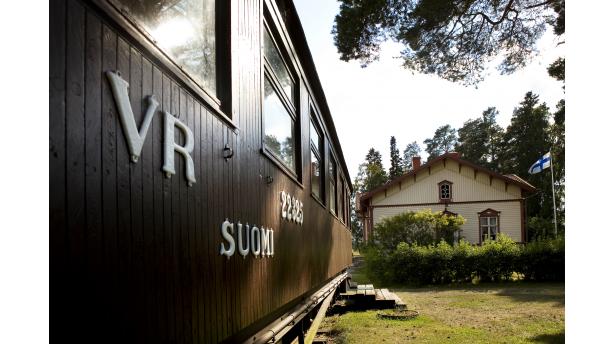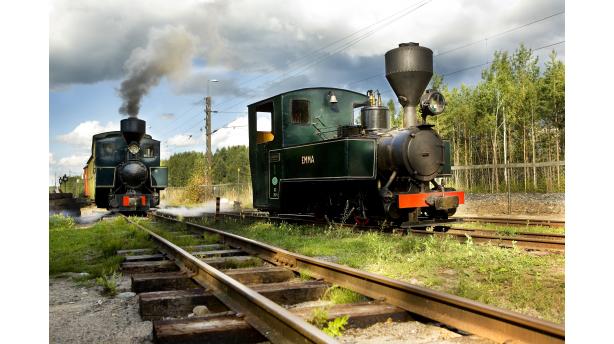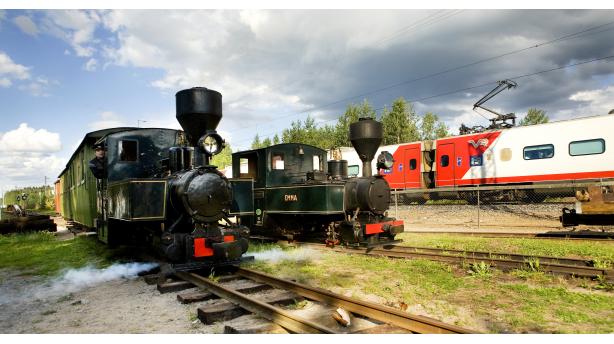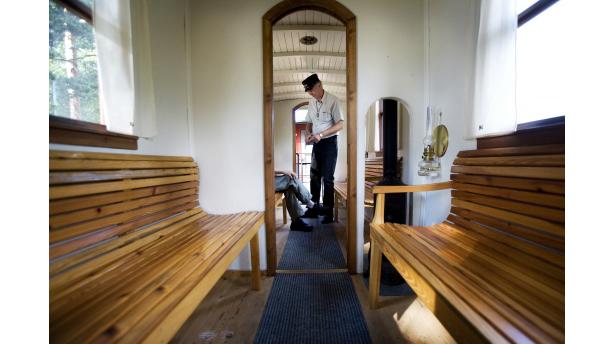Museum A-Ö » Special museum » Nykarleby Museum Railway
Nykarleby Museum Railway




Did you know...
When the train was full of passengers and cargo, it could happen, that the passengers had to get out of the train and push it uphill.
The Nykarleby Museum Railway stems from the turn of the 20th century. The steam engine of the Museum Railway pulls the antique passenger cars along the two kilometres long newly deployed railway track. On this track, which is among the shortest in Finland, you can enjoy a ride on a genuine steam engine. Café Emma situated in the station building is open during the days of traffic in the summer.
The Museum Railway situated in the proximity of the Kovjoki station brings the Nykarleby railway back to life. There used to be a railway track from the Kovjoki station to Nykarleby, and the line was active in 1899-1916.In the building functioning both as a workshop and an engine hall is for instance the steam engine dating back to 1935, which used to haul chalk from Pargas, some Danish and English motor locomotives and one of the original Nykarleby railway cars from the year 1901. In the station building is a café furnished with 19th century furniture and an art exhibition embellishing the walls. There is also a playground on the area, which has been built along the railway theme.
The idea of building a railway in Ostrobothnia originated already in the 1860s. It wasn’t, however, until the 1880s that the Tampere-Vaasa track was built, and after that it was possible to start thinking about extending the track also to Nykarleby. Work on the Kovjoki-Nykarleby track began in 1897. A Forney type locomotive from the Baldwin locomotive factory in the United States was acquired. The engine had the capacity to pull 7,25 tons. The passenger cars with seats for 28 people and standing places for 10 people came from Germany. The 12,5 km long track was inaugurated in October 1899, and two working trains with a passenger car rode twice a day to Kovjoki.
The track was expensive, and it was difficult to make the business profitable. There were all too few connections to the neighboring cities, for instance Vaasa. Still in the year 1905 it wasn’t possible to make a two-way trip to Vaasa, so the number of daily shifts was increased. The narrowness of the track was one of the reasons for the unprofitability of the traffic, as it was impossible for the trains to transport loads as large as on the wide railed track of Jakobstad or Kokkola. Transport loading to the track with narrow rails was time-consuming and because of the hilly terrain it was difficult for the trains to keep up the pace, if the freight cars were fully loaded. Another reason was the shallowness of the harbour at the end station, which is why the vessels transporting export goods could not dock and load their goods from the train.
The armament of the Russian army during the First World War offered the possibility to get rid of the unprofitable railway track. Businessmen bought everything, that could be used for military purposes, and then re-sold it. This is what also happened to the Nykarleby railway, which was sold for 350 000 marks in 1916.
Kovjoki has been chosen as Village of the year 2019 in Ostrobothnia



